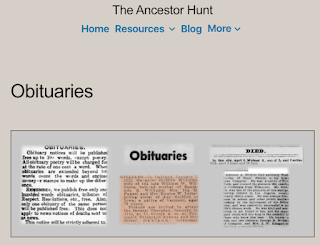Researching my husband's 1c3r Frank Bentley Light (1853-1913), I was stopped dead in my tracks (so to speak) by the headlines announcing his death in Vacaville, California in 1913. The blunt language was not at all subtle but did accurately describe what happened to this man.
Above, a brief notice about "the carpenter who dropped dead" while working on a Union Ice Company building being identified as Frank B. Light. This item was picked up by the Sacramento Bee newspaper from the Vacaville newspaper. The headline "Was Frank B. Light" served as a correction because the initial report misidentified the dead man.
The full obit, which appeared on April 11, 1913 in the Vacaville Reporter newspaper, reads:
Dropped Dead. Frank B. Light Succumbs to Attack of Heart Failure. Frank B. Light, a resident of this place for a number of years, dropped dead last Friday morning while engaged in unloading a carload of ice for A.M. Stevenson. The cause of death was heart failure. Deceased was a native of Indiana and was 60 years of age. He came to California with his parents in 1853, and resided in Santa Rosa for many years before coming to Vacaville. He was a carpenter by trade and a conscientious and upright man who had the respect and esteem of all who knew him. He was unmarried and leaves a sister Mattie Light and a brother L.E. Light. The funeral was held Sunday from the Baptist church and the interment was in Vacaville cemetery.
Frank lived with his sister Martha Ann "Mattie" Light (1854-1917) for years after their parents died. She worked as a dressmaker, according to her voter registration, but it's a good guess that Frank kept a roof over their heads with his carpentry and work in lumbering and as a laborer. Vacaville was a small town when they lived there--fewer than 1,200 residents until the 1920s--and probably everybody knew everybody.
After Frank died so unexpectedly, 112 years ago this month, Mattie went to live with their brother Lucien E. Light (1862-1918), also a carpenter. Sadly, Mattie became ill and died in 1917, followed just a year later by Lucien's death. I noticed that Lucien's obit was worded more gently than Frank's obit. The headline read: "L.E. Light Passed Away Last Friday," perhaps because this death (from Bright's disease) was nowhere near as sudden as Frank's death.
"Language" is this week's #52Ancestors genealogical prompt from Amy Johnson Crow.







